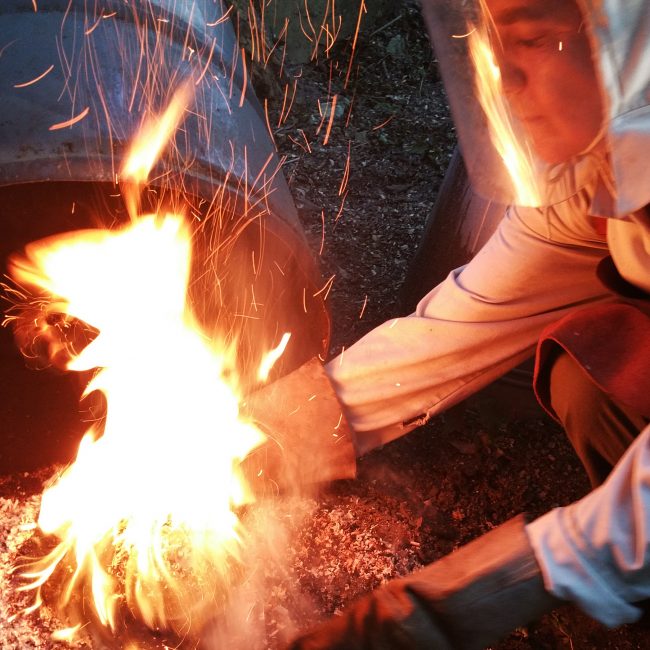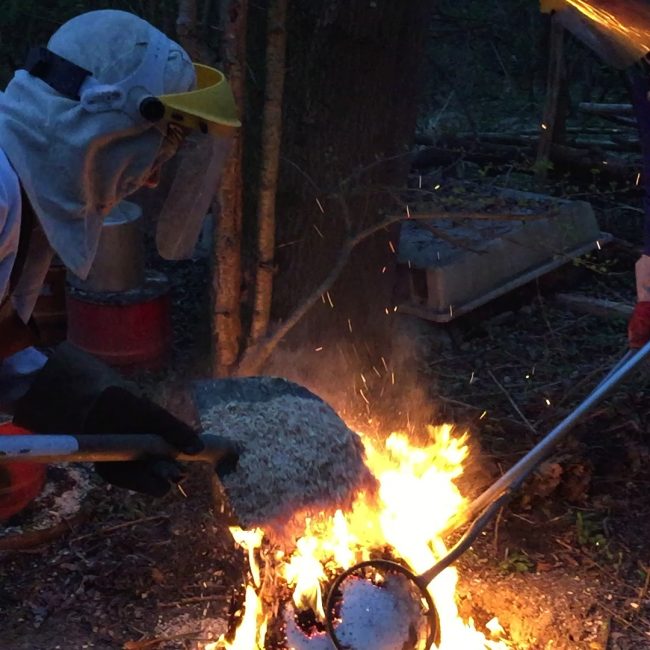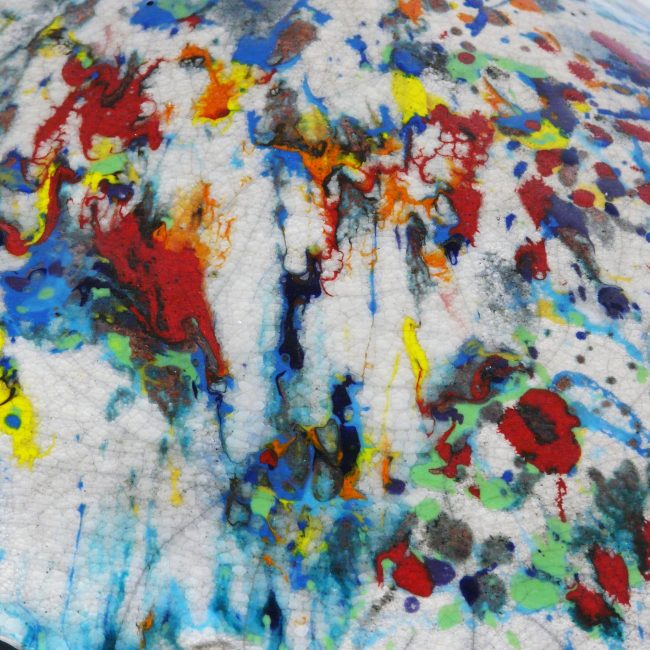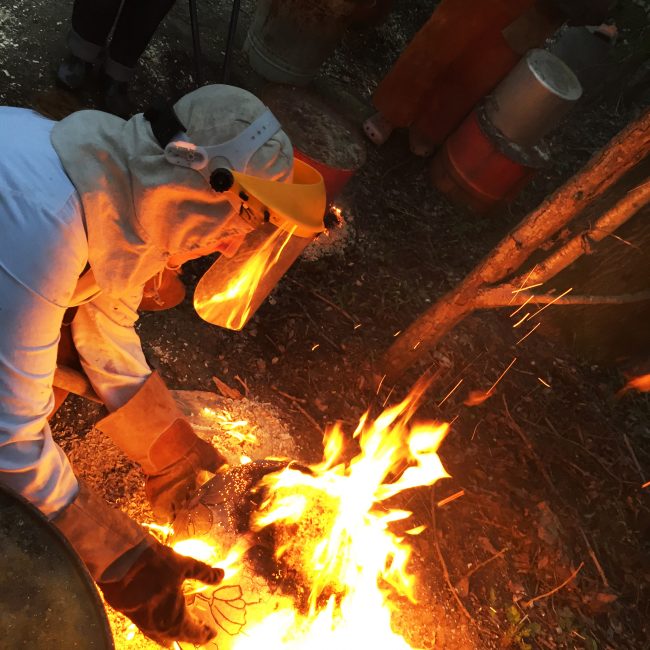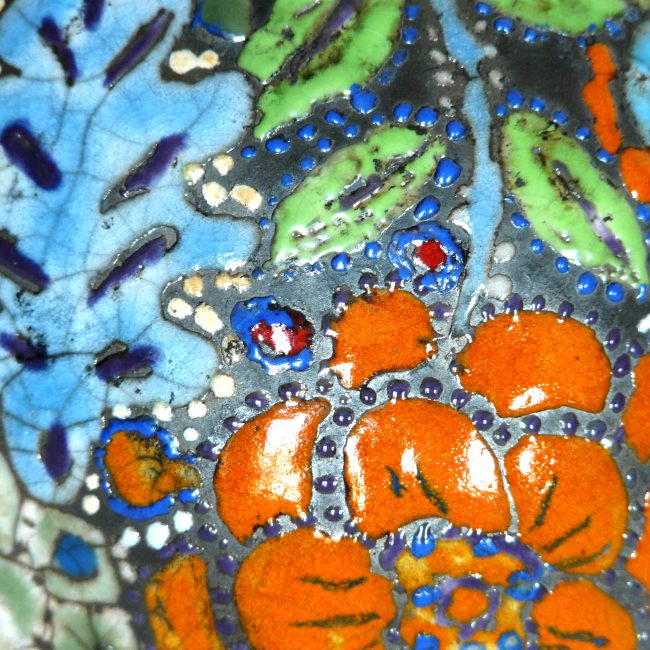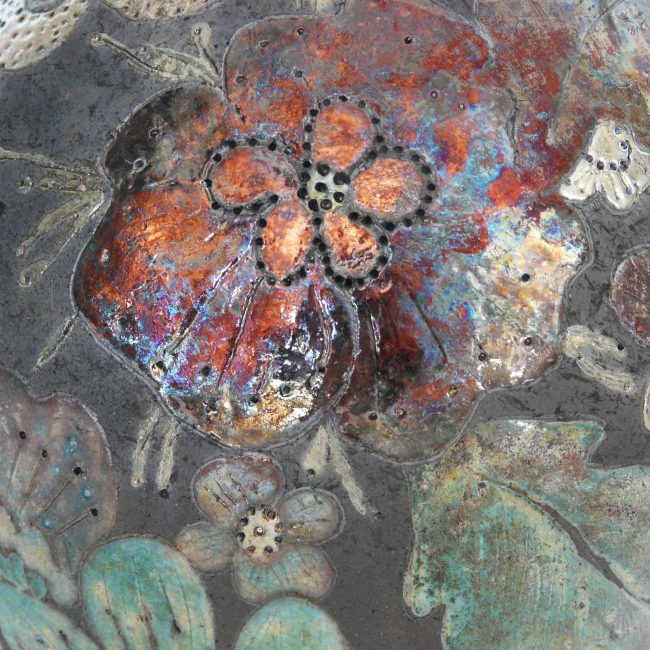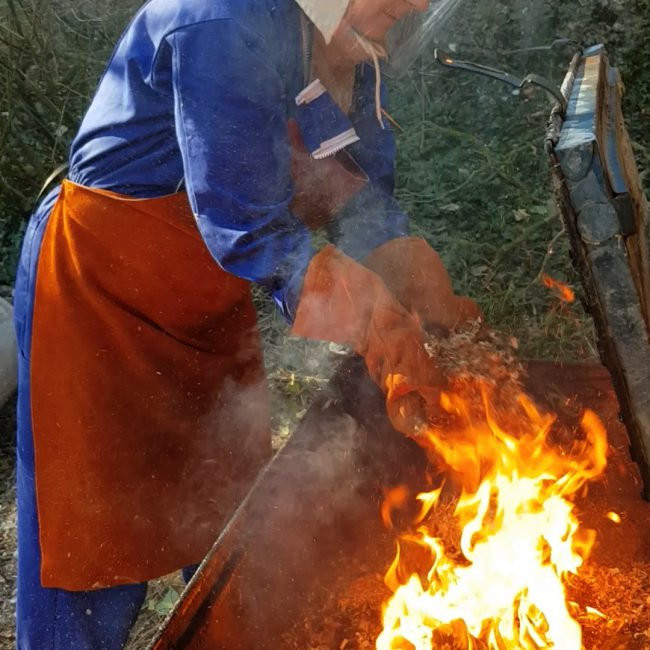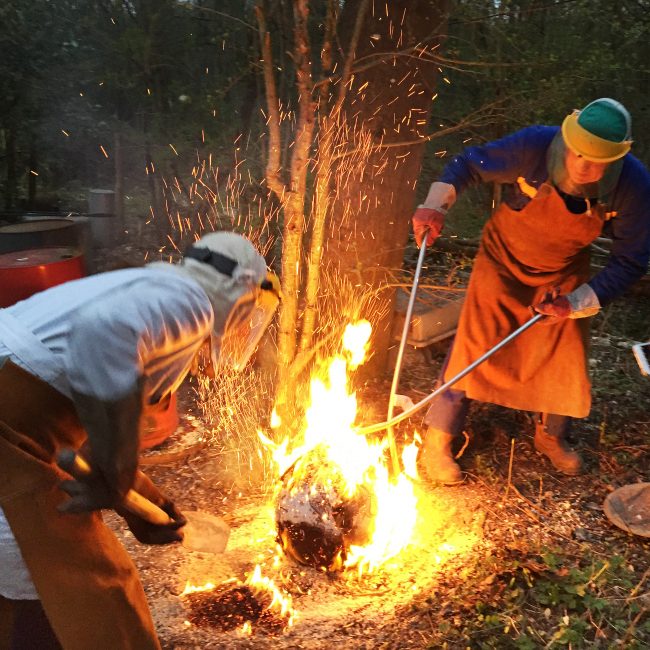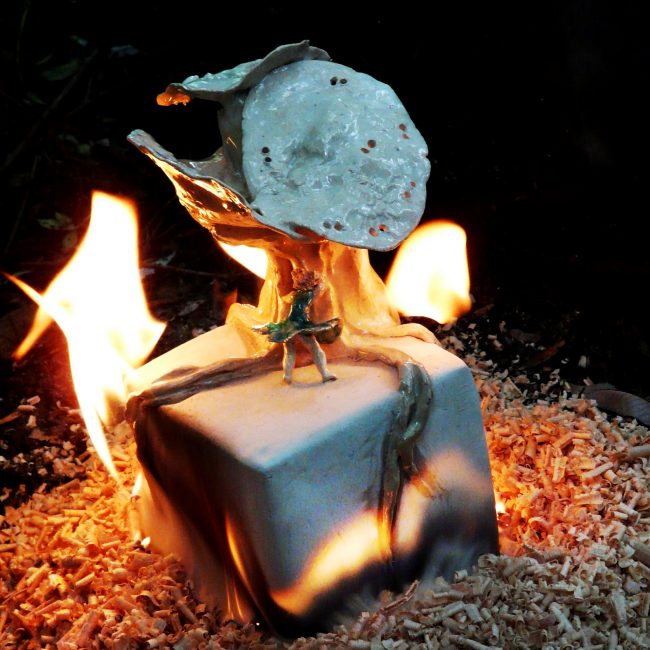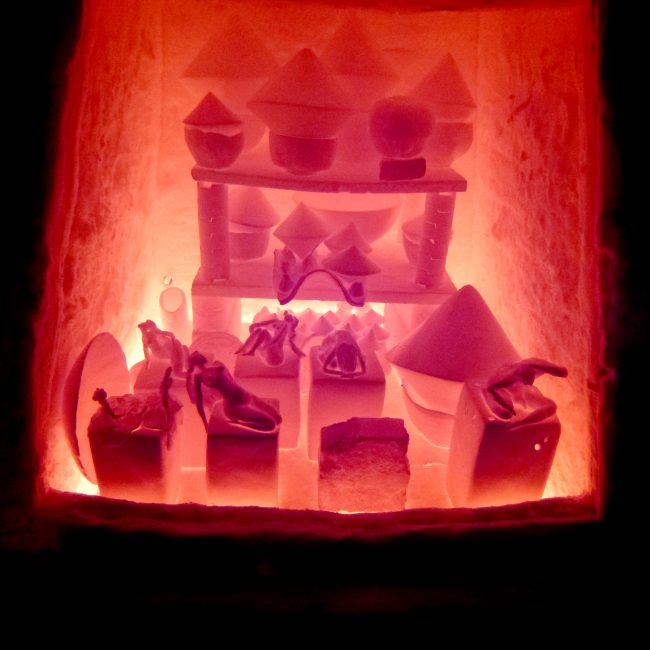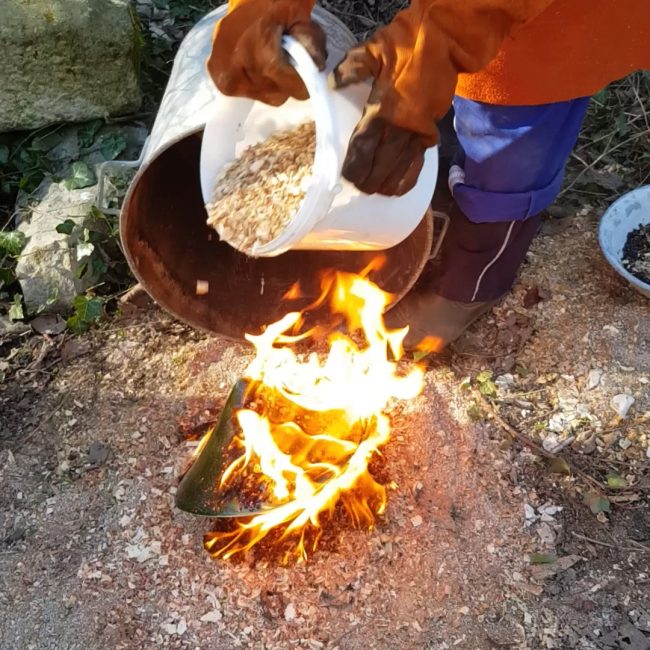Raku is the name of a Japanese dynasty, as well as the name of a pottery technic from the 16th Century inspired by the tea ceremony and a « live in the moment » type of philosophy. The raku technic is linked to the Wabi, which means acceptation of what is, randomness and imperfection. It is precisely this dimension of unforeseen and unexpected that I think makes the raku such a magical technic: joy, pleasure, happiness, serenity… in randomness.
Raku is first and foremost a state of mind. The result is always a gift, as it is an adventure to discover the « accidents » more or less controlled provoked by the firing.
It will be necessary to accept or refuse them depending on our expectations, demands, desires and doubts. This technic is feeding itself from our contradictions and confront us to ourselves without complaisance. This is probably why it is such a topic of passions. A wonderful invitation to let go.
This technic is characterized by unique smoking and metallization processes. Result can go anywhere from a simple black and white contrast of the smoked clay and the enamel to a glowy and metallized lustre resulting from the combination of multiple metallic oxydes.
The raku technic demands two firings, including one in a low-temperature raku kiln (around 960 °C – 980 °C). Because of the smoke effects, potentially toxic, the firing is always outdoor. Supported by special protections, the incandescent creations are taken out of the kiln thanks to anvil tongs and left carefully in a tray along with sawdust and other objects emanating carbon which enable the smoking and the twitching of the enamel.
You can thus model your sculpture by playing with non-enameled parts for the blacks and with enamels’ oxydes to obtains more or less metallized reflections. Each element -clay, enamel, oxydes, ashes projection or borax during the firing – can impact to an infinite extent nuances of the final sculpture.
Each firing is different. Each piece develops a very specific and decisive appearance. Nothing is uniform. This provides even more movement to shapes, and surprises always come out of it.
THE MYSTERY AND FASCINATION AROUND THE WORK WITH FIRE
- At the Jules Vernes, both raku and naked raku are experimented.
- Raku internships, programmed or on demand, are organized at the workshop. During some of the classes, students of the workshop can, if they want to, work on creations that they wish to use for a raku firing.
- Students that are not part of the Jules Vernes workshop and that are exclusively attending the raku internships can choose between 3 to 5 pieces already ‘biscuited’ by the workshop -raku bowls, salad bowls etc. and included in the internship.
- If they want to, they can attend the classes et create their own pieces. See Formule 3: Raku internship – The exploration.
- For safety reasons, no creation made outside the workshop will be accepted for a firing.
